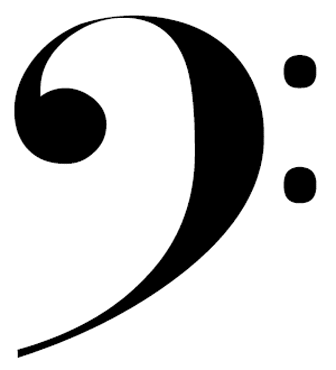
Learn to Play Bb Clarinet
Simple lessons for learning music
Before playing notes on your clarinet, you must first learn how to read sheet music.
Let’s start with the music staff. This is a staff. All the notes you will learn will be placed below, on or above the lines and spaces. The lines and spaces are numbered from bottom to top, one being at the bottom and the top line being the fifth. This staff is blank and currently has no notes.

MUSIC NOTES
Each line and space of the staff is assigned a note. This note, assigned a line or space, is always found in the same place. The first line, or bottom line, will always be the music note E. The first space, or bottom space on the staff, will always be the music note F. Same goes for the remaining notes.
You’ll notice the spaces read the word “FACE.” This is a very easy reminder of these notes.

The lines have a clever acronym.
Every Good Boy Does Fine
It is important to memorize these notes when including your instrument fingerings to play music.

TIME SIGNATURES
After the clef symbol, there are two numbers, this is the time signature.
The time signature allows you to know how many beats per measure are in the piece of music.
A measure, or bar, of music is the space between the vertical lines on the staff.
We’ll start by learning the basic time signatures for now: 4-4, 3-4 and 2-4 time.
You’ll notice the red numbers above, this shows us 4-4 time for this measure of music. Meaning, there are 4 beats total in the measure, counted by quarter notes.
There are 4 quarter notes, making up the full measure. If the next measure of music was shown, it would most likely show us a combination of music notes equaling the same length to fill 4 quarter notes.
We’ll explain quarter notes and note length a little further down this page.

When playing Bb clarinet, you play in the Treble Clef. That is the symbol placed at the beginning of each line of written staff music. A pianist uses both treble and bass when reading music, but we’re just using Treble.

Bb (B flat) clarinet does NOT use bass clef when reading music. But, here is what it looks like. The bass clef notes on the line and spaces of the staff are different from treble clef. Many different instruments use this clef for LOW notes.

Here are many different types of time signatures. Notice the 4-4 time, we’ve explained a little, also can be shown with a “C” in its place.

MUSIC NOTE LENGTHS
If you look at a sheet of music, you’ll notice that they don’t all look the same. Look at this line of sheet music, for example.
Each measure contains notes on the same line, they are all the same music note E.
BUT, they all look different. Some are filled in black with a line, some are not filled in with a line and one is not filled in without a line. Let’s see what makes them all different.

QUARTER NOTES
This is a quarter note. Quarter notes count for 1 beat, their ovals are filled in with black and, have a long stem (or line) going up or down from one side of the note head.

HALF NOTES
This is a half note. Half notes count for 2 beats, their ovals are hollow and, have a long stem going up or down from one side of the note head.

WHOLE NOTES
This is a whole note. Whole notes count for 4 beats, their ovals are hollow and, have no stem.

There are many more note lengths to cover, but we’ll start with these.
I think you’re now ready to try to put this information together with some clarinet fingerings!
If you have any questions, please leave a comment and I’ll try my very best to answer. Thank you!
